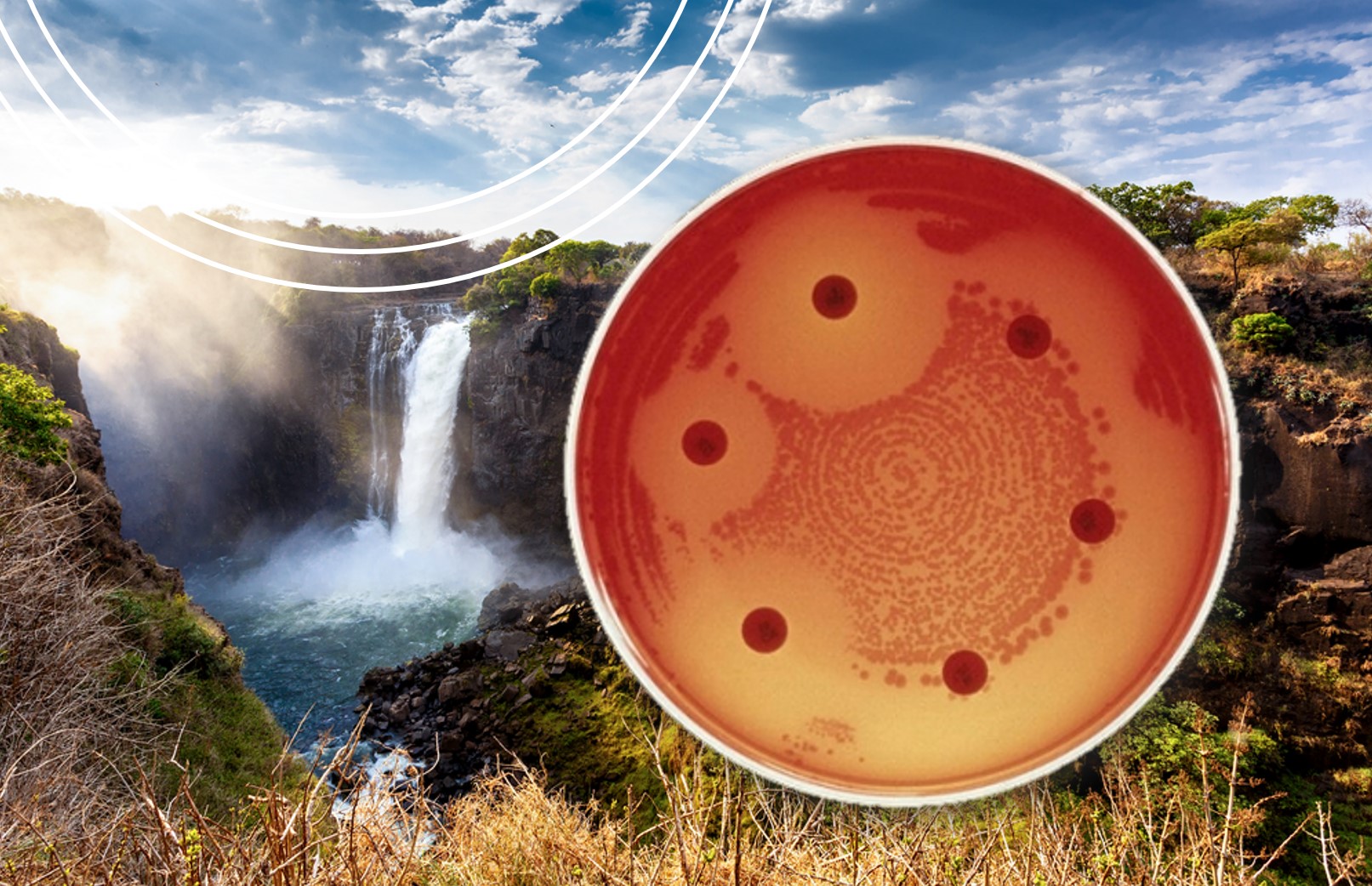The misuse and overuse of antimicrobial drugs in human and veterinary practices has placed our future at risk by increasing the resistance of pathogens to antibiotics. This phenomenon is known as antimicrobial resistance (AMR).
The World Organisation for Animal Health (WOAH, founded as OIE) collaborates with the World Health Organization (WHO), the Food and Agriculture Organization of the United Nations (FAO), and the United Nations Environment Programme (UNEP) on a project in Zimbabwe making significant progress to reduce AMR in the livestock sector. The Zimbabwe Department of Veterinary Services (DVS) reported that 65% of cattle mortality in the country are attributed to theileriosis, in addition to other tickborne diseases. In order to simultaneously reduce cattle mortality and antibiotic use in the cattle production sector, an alternative solution is needed. Theileriosis vaccines are one such solution.
Infected tick vectors, Rhipicephalus appendiculatus also called brown ear tick, transmit the Theilera parva infection (or theileriosis) to domestic cattle during feeding. This tick species therefore provides a vital input to the production of vaccines against theileriosis. In June 2022, Zimbabwe, with the support of the Quadripartite AMR Multi-Partner Trust Fund, collected reference tick nypmhs from national parks to support the production of 100,000 doses of vaccines. The project aims to produce a viable vaccine by conducting vaccine trials among a target population of cattle through the end of 2022. An initial 20,000 doses have been produced and prioritised for distribution to disease hotspots and an additional 80,000 doses are planned for production in 2022.The impact of the vaccine on disease reduction will be measured and monitored over the next two years.
in Zimbabwe
In addition, technical officers from Zimbabwe’s Department of Veterinary Technical Services (DVTS) Parasitology Section received theileria Immunofluorescence Antibody Test (IFAT) training in order to detect an animal’s exposure to theileria parasites and assess their response to the vaccine. The trainings, conducted in June 2022, further empower DVTS to carry out critical quality controls along the theileriosis vaccine production chain. WOAH therefore is supporting every aspect of vaccine development and deployment from conducting laboratory and field trials using the new vaccine, supporting the registration of the vaccine with the Medicinal Control Authority, and training field staff to implement mass vaccinations.
Personnel using the dragging method to collect ticks at Chivero National Park. Picture © DVS (ZW) 2022
in Zimbabwe
In summary, theileriosis vaccine production (marketed as BOLVAC) is a major breakthrough, and it means Zimbabwe can now produce vaccines against three out of the four major tick-borne diseases (TBDs) prevalent in country. With this production capacity, the country is now ready to roll-out its Integrated Ticks and Tick-Borne Disease Control Strategy (ITTBDCS).
Theileriosis vaccine stored in liquid nitrogen. Picture © DVS 2022
in Zimbabwe
This effort is just one component of a single project among ten active projects launched globally by the Quadripartite Antimicrobial Resistance Multi-Partner Trust Fund (AMR MPTF) to apply best practices and scale up joint action in the fight against antimicrobial resistance.
The AMR MPTF is a global effort to address the health risks of AMR with a pooled fund jointly managed by the Quadripartite Alliance for One Health: FAO, UNEP, WHO and WOAH. The objective of the AMR MPTF is to facilitate country, regional, and global coordination for One Health action on AMR in low- and middle-income countries. Ten countries (Cambodia, Ethiopia, Ghana, Kenya, Indonesia, Morocco, Peru, Senegal, Tajikistan and Zimbabwe) are currently implementing the AMR MPTF project since late 2020/ 2021. An additional six countries (Bangladesh, Cameroon, Kyrgyzstan, Madagascar, Mongolia and Tunisia) are developing new project proposals.



